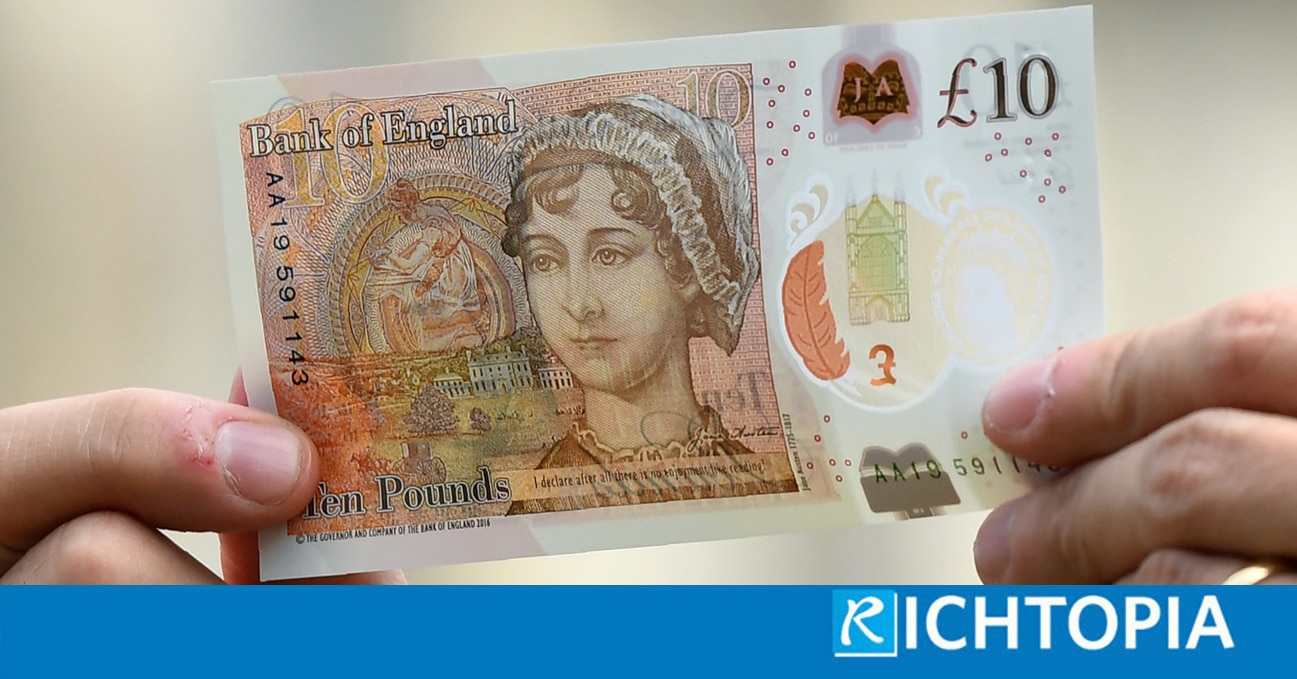Banknotes pass under our noses nearly every day. And yet, how many of us have taken the time to study them?
On the 13th September 2016, the UK’s first polymer banknote entered circulation. The see-through plastic film, according to the Bank of England (BoE), will allow for cleaner, more secure and more durable banknotes.
The next step of the changeover has recently been announced in the UK, and it comes in the shape of the new polymer £10.
English novelist Jane Austen will adorn the note, the mastermind behind such popular works as Pride & Prejudice, Sense and Sensibility and Persuasion. The note was unveiled last month at Winchester Cathedral, the site where Austen herself was buried, also marking the 200th anniversary of the author’s death.
Speaking at the site, the BoE Governor Mark Carney told reporters that “banknotes serve as repositories of the country’s collective memory, promoting awareness of the United Kingdom’s glorious history and highlighting the contributions of its greatest citizens.”
Features of the new Jane Austen note will include the following:
- A portrait of the author, commissioned by her nephew James Edward Austen-Leigh
- An image of Godmersham Park, 1732, which was once the home of Jane Austen’s brother
- A central design inspired by Austen’s 12-sided walnut writing table and quills
- A depiction of Pride & Prejudice character Miss Elizabeth Bennet
Jane Austen, to date, will be the third woman to ever feature on a British banknote after the Queen and Elizabeth Fry. The new note will be finding its way into wallets by the 14th September 2017.
The following £20 polymer note is currently set to be released in 2020, and due to the backlash from vegans, vegetarians and some religious groups, will make use of plant-based substitutes as an alternative to tallow (animal fat).
The note will feature English landscape painter J.M.W. Turner, often referred to as “the painter of light”. He is known to have popularised and elevated landscape painting over the 18th and 19th centuries. One of his most recognisable works will feature on the banknote – The Fighting Temeraire, 1839.
Upon careful study, you’ll find that every building, quotation and subtle detail on the UK’s currency work together to weave intricate stories about the great British figures who appear on them.
ForexTime, an online forex brokerage company, recently put together a fascinating visual piece which picks apart each current UK banknote.
On the newest polymer £5, for example, many of the details commemorate the life and work of past Prime Minister Winston Churchill. A golden emblem is depicted to his left, which represents the Nobel Prize he was awarded in 1953.
What you might not have noticed, however, is the Latin inscription etched into the emblem as well. It reads: Inventas vitam iuvat exclouisse per artes. This can be loosely translated to “and they who bettered life on earth by their newly found mastery”, or to put it simply, “Inventions enhance life which is beautified through art.”
Above Big Ben, to the right of Winston Churchill, can be found a small circular piece of foil which reads “Blenheim”. This denotes Blenheim Palace, a monumental country house situated in Oxfordshire, and the original site of Churchill’s noble birth.
Other details you’ve likely overlooked on British currency include Adam Smith’s famous pin factory exemplar, the famous duo Boulton and Watt, who together were responsible for kick-starting the Industrial Revolution, and the HMS Beagle, the iconic ship that took Charles Darwin on a five-year worldwide journey in search of scientific truth.
But it isn’t just the UK’s currency that hold an array of meaningful details. The latter part of FXTM’s analysis sheds some light on the context behind the depictions found on Euro notes.
Those who aren’t quite acquainted with them might at first believe the bridges and buildings featured represent real-life structures. When in fact, they are stylised illustrations that epitomise the architectural styles and values of the time. As a series, it could be said that they act as a real pointer to the societal progress made over the centuries.
According to the European Central Bank, the windows and open doorways featured on the notes represent the European spirit of openness and cooperation. The bridges are said to symbolise both the communication between the people of Europe, and between Europe and the rest of the world.
(Source: ForexTime)






